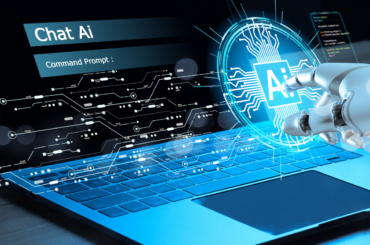Throughout the history of the information technology industry developers have played a critical role, building both the software that allows computers to operate, and the applications that run on those computers. Nevertheless, developers usually found themselves sequestered away in dimmed rooms hidden deep within the IT department’s offices, invisible to much of the company. Treated like an overhead function by management, few IT roles led much beyond the level of VP of IT or CIO, and rarely, if ever, did a CIO graduate to the CEO position. For most developers, a career spent generating algorithms and writing reliable, well-performing code was what the future held.
But around 2000, the world was starting to change. With the emergence of the Internet, and a decade later, widely available smart mobile devices, the canvas that developers painted upon outgrew the classic centralized systems that housed terabytes of data and thousands of programs.
In the past 10 years, well thought out and well written software has shown that it can be disruptive in ways that many CEOs were not expecting. Enter companies like Airbnb, Uber, Lyft, Craigslist, eBay, and social media companies like Twitter, LinkedIn, Facebook and YouTube. These companies all had one really important similarity: None of them held substantial capital assets.
Airbnb, for example, found itself competing effectively with well-established and capital asset heavy companies such as Hilton Hotels & Resorts, Marriot International, Inc., but it holds no capital expenses associated with buildings; no maintenance, no staff and no asset management or depreciation to amortize. Airbnb used compelling software to empower end users to book stays at properties in desirable locations at lower costs. It was similar for other digital natives which disrupted the rental car industry (another asset-heavy business), classified advertising, and traditional media.
Today, we see another wave of digital innovation taking place. However, today it’s well established businesses with substantial capital assets that are leveraging those assets in conjunction with innovative and disruptive software investments to create a new competitive environment. Many of these companies have executives who have nervously watched as companies like Amazon have deftly moved from selling books, to selling all types of retail goods, including perishables such as food and leaving a trail of disrupted competitors behind as roadkill.
The innovative names emerging today as digital innovators are certainly not new – they are long-standing industry giants such as John Deere, Caterpillar, FedEx, JPMorgan Chase, Walmart and Best Buy.
Transitioning from Software Consumer to Software Producer
One of the more fascinating changes in this emerging segment is how companies transition from functioning primarily as consumers of commercial software technology to organizations that plan their code consumption and creation. Organizations are shifting to consuming code, creating code, and distributing that code into their own offerings and operations but also sharing that intrinsically unique code with an external community of third-party partners around the company’s business. For companies leading the way in their industry, extending their business processes to new channels can help them expand revenue opportunities across a larger number of users or customers.
The transition to becoming a digital innovation factory includes the four so-called pillars of digital innovation ––planning, sourcing, developing and distributing. For developers, the first three roles are well understood and are part of normal operations they conduct. After all, developers know how to plan, as few projects actually get underway without a plan along with an architectural blueprint. Sourcing components has become a highly mainstream activity given the widespread use of open source software, which is the ultimate catalog of components that can be sourced to solve individual algorithmic challenges. And develop is what developers do.
The fourth pillar is new for many companies that were not historically in the business of selling software products. Indeed, many organizations that write their own software today are turning to the distribute function as a way to engage with a broader community to develop a collaborative development effort, or in other cases, to sell access to software services, data services or other value-add resources that partners, customers or competitors would gain benefit from, and be willing to pay to have access to these services.
What Comes Next?
IDC research details out the role of developers and DevOps professionals in a digital innovation scenario in the published document, Developers: Driving the Future of Digital Innovation. In this IDC Perspective we explore the various activities that constitute the four pillars described earlier.
And should you think of this trend as a fad, consider that today 64% of the global 2000 businesses already have a platform designed for external developer engagement. That is to say that over half of the world’s largest organizations are proactively trying to build out a community of developers, users, customers and partners that can collaborate on projects that offer a common interest, with an eye toward hopefully selling something to these contributors.
Those organizations with a developer engagement platform include well known vendors such as Bank of China, JP Morgan Chase and Wells Fargo in the financial services industry, BMW, Ford, General Motors and Toyota in the automotive sector, and companies such as Bristol-Myers Squibb and Johnson & Johnson in the pharmaceutical industry.
Software, it seems, is becoming a tool that not only increases a company’s competitiveness, it also offers the possibility of opening entirely new revenue streams for the companies involved.
Learn more about IDC’s Future of Digital Innovation Research and the importance of software in IDC’s research perspective, Developers: Driving the Future of Digital Innovation.




